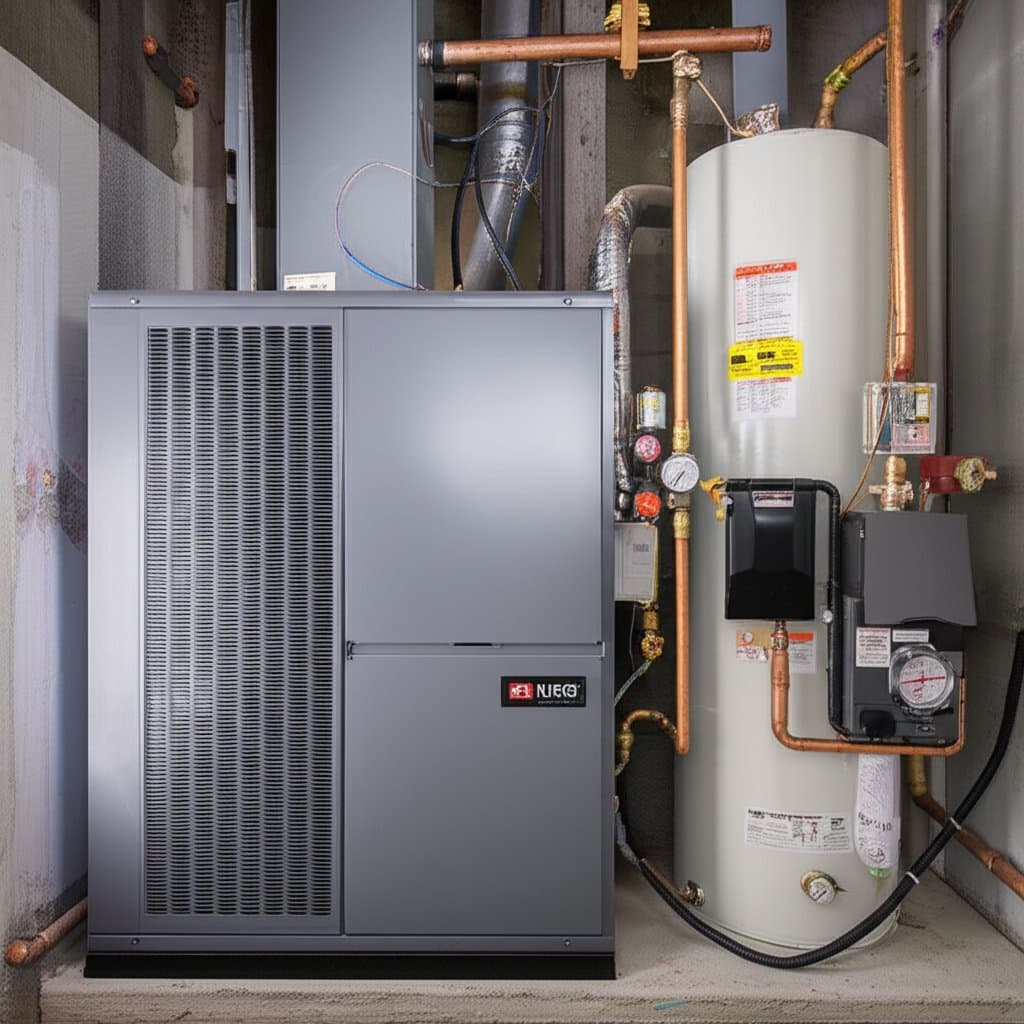Dual-Fuel HVAC Systems: Achieve Up to 50 Percent Savings on Hybrid Heating in Cold Climates
Homeowners in regions with harsh winters often face fluctuating energy costs. Electric heat pumps perform well in moderate temperatures, but extreme cold requires supplemental heating from gas furnaces, which increases expenses. Dual-fuel systems address this challenge by combining these technologies for balanced, cost-effective operation.
The Advantages of Dual-Fuel HVAC Integration
Dual-fuel HVAC systems pair an electric heat pump with a gas furnace to optimize performance across varying weather conditions. The heat pump manages heating and cooling in milder climates, extracting ambient heat efficiently with minimal energy use. In subfreezing temperatures, the gas furnace activates to provide reliable warmth, preventing the heat pump from overworking and consuming excess electricity.
Field experience demonstrates that these systems can reduce heating expenses by up to 50 percent compared to single-fuel alternatives. This efficiency stems from using electricity for routine tasks and natural gas for peak demands, where each source excels. Advanced controls monitor outdoor temperatures and indoor needs to execute switches without user intervention, ensuring consistent comfort.
Mechanics of Dual-Fuel Operation
A dual-fuel system functions through coordinated components that prioritize energy savings. The heat pump operates on electricity, moving heat via refrigerant cycles to warm or cool the air. Sensors detect when efficiency drops below a set threshold, typically around 30 degrees Fahrenheit, prompting the furnace to engage.
The furnace burns natural gas to generate heat directly, distributing it through the same ductwork as the heat pump. This shared infrastructure minimizes installation complexity and maximizes space efficiency. Smart thermostats enhance the process by learning household patterns and adjusting operations for further savings, such as pre-heating during off-peak utility hours.
Strategies for Peak Dual-Fuel Performance
To realize the full potential of a dual-fuel system, implement these targeted maintenance and optimization practices.
- Adjust the switchover temperature precisely, setting it between 30 and 35 degrees Fahrenheit based on local climate data and energy rates.
- Arrange professional inspections twice yearly to check refrigerant charges in the heat pump and verify clean burners in the furnace.
- Conduct a home energy audit to identify and seal drafts around doors, windows, and outlets, then add insulation to walls and ceilings.
- Install a variable-speed blower motor to regulate air circulation, reducing energy draw during partial load conditions.
- Monitor utility bills monthly to track savings and refine thermostat schedules for unoccupied periods.
These steps not only extend equipment life but also amplify the system's environmental benefits by curbing unnecessary fuel consumption.
Key Factors in Dual-Fuel System Adoption
Before committing to a dual-fuel upgrade, assess your current setup thoroughly. Compatible systems integrate with existing ductwork, potentially lowering retrofit costs. Full installations typically range from $5,000 to $10,000, influenced by unit sizes, regional labor rates, and any necessary electrical upgrades.
Long-term returns include reduced utility payments and decreased repair frequency due to balanced usage. Environmentally, these systems lower overall carbon output by favoring electric operation when possible. Research incentives like federal tax credits or state rebates, which can cover 20 to 30 percent of expenses.
Safety remains paramount during installation and operation. Certified professionals must manage refrigerant handling, electrical wiring, and gas line connections. Regular combustion analysis ensures safe furnace function, mitigating risks such as carbon monoxide buildup through proper venting.
Steps to Implement Dual-Fuel Heating
Transitioning to dual-fuel technology begins with a professional evaluation of your home's heating needs. Select units sized appropriately for square footage and insulation levels to avoid inefficiency. Post-installation, track performance with energy monitoring tools to confirm anticipated savings.
Homeowners report steadier indoor temperatures and predictable budgets year-round. Consult local HVAC specialists for personalized assessments and financing options tailored to your situation.
Common Questions on Dual-Fuel Systems
Question: What is the expected lifespan of a dual-fuel HVAC system?
Answer: Proper upkeep allows dual-fuel systems to deliver 15 to 25 years of service, with the heat pump often lasting 10 to 15 years and the furnace up to 20 years.
Question: Is retrofitting possible for an existing HVAC setup?
Answer: Yes, in many cases. A compatible gas furnace can pair with a new heat pump, enabling hybrid functionality without overhauling the entire system.
Question: Do dual-fuel systems qualify for energy incentives?
Answer: Frequently, they do. Programs like ENERGY STAR rebates and utility discounts support efficient hybrid installations; verify eligibility through local providers.



